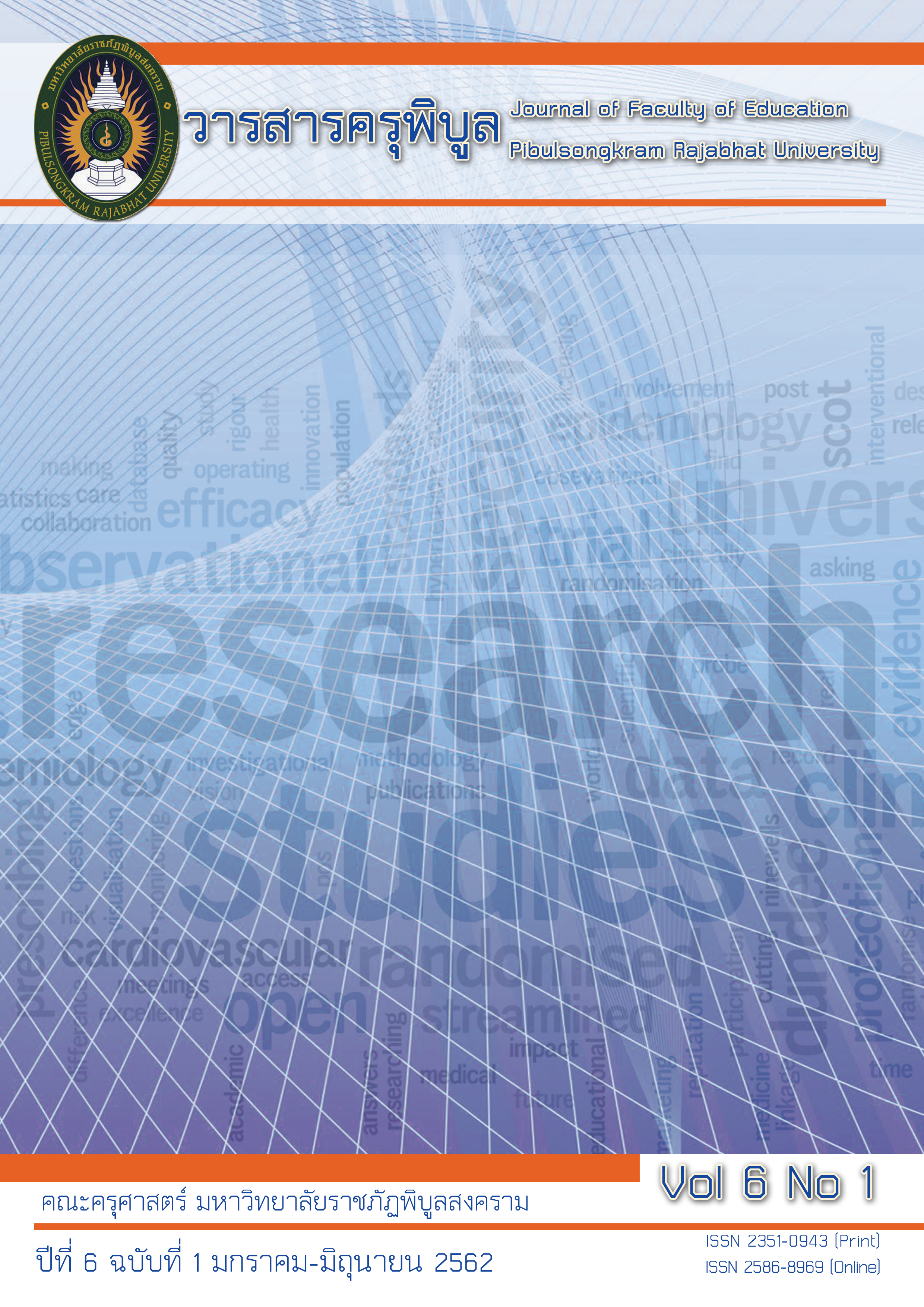A Linear Structural Equation Model of Self-Concept of Lower Secondary School Students Under Office of the Basic Education Commission
DOI:
https://doi.org/10.14456/edupsru.2019.9Keywords:
Self-Concept, Self-Efficacy, Virtue & Ethics, ThainessAbstract
Research Article
The objectives of this study were 1) to examine goodness-of-fit between the linear structural equation model of self-concept of grade 9 under office of the basic education commission, and 2) to investigate the direct, indirect, and overall influences of causal factors on self-concept of grade 9 students under office of the basic education commission developed by the researcher and the empirical data. A sample was 785 students as selected by multi-stage random sampling. The instrument used to collect data for measuring structural Attitude five tests, i.e. self-concept tests, self-efficacy tests, virtue & ethics tests, thainess tests and situation of virtue & ethics tests. The reliability values were ranged .802 .864 .921 .859 and .925 and construct validity were ranged between 0.67 to 1.00. Statistics used to analyze data included fundamental ones and structural equation model analysis.
The results revealed that 1) The linear structural equation model of self-concept, developed by the researcher, was fit with empirical data. There were standardized at =113.056,df= 98 ,p-value=0.142,
/df = 1.154 , CFI= 0.997 ,TLI= 0.996 ,RMSEA=0.015,SRMR=0.028 and 2) There were significantly difference at 0.01 of all three factors ; self-efficacy had the highest direct effect and indirect effect passed to thainess and total effect as 0.727. Secondary were : virtue & ethics had indirect effect passed to thainess and self-efficacy and total effect as 0.501, and thainess had direct effect and total effect as 0.254. The self-efficacy of causal factors could explain 61.10% of the self-concept.



